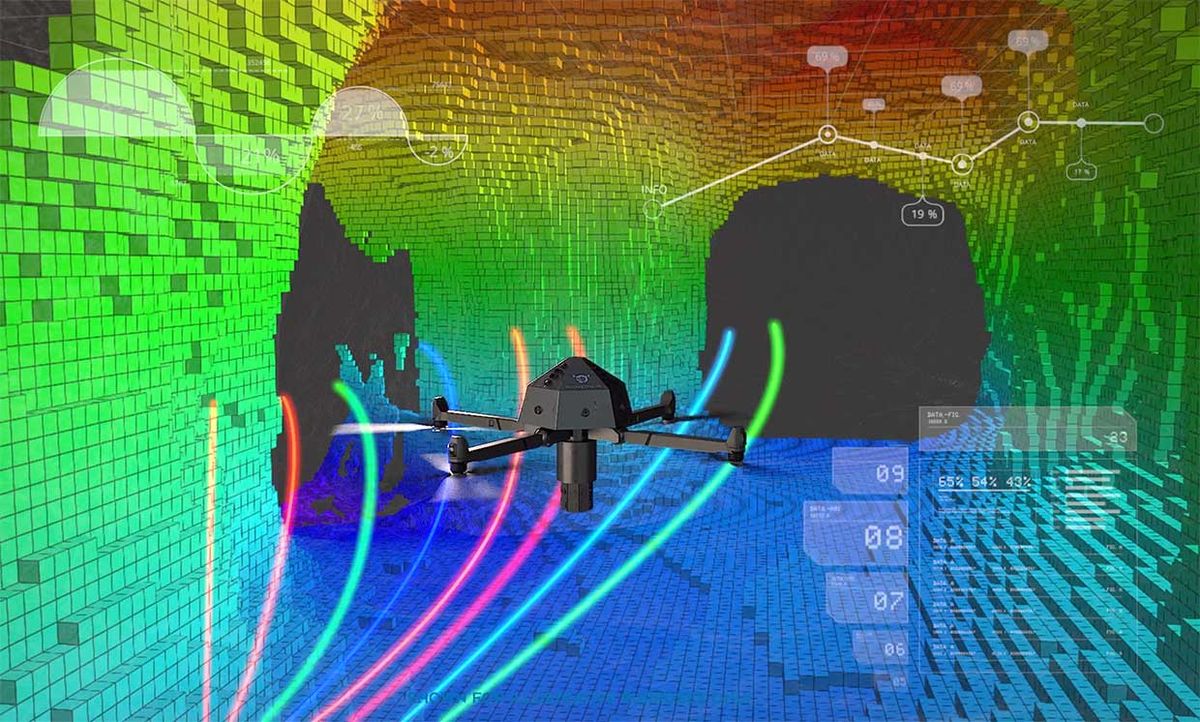Inspecting old mines is a dangerous business. For humans, mines can be lethal: prone to rockfalls and filled with noxious gases. Robots can go where humans might suffocate, but even robots can only do so much when mines are inaccessible from the surface.
Now, researchers in the UK, led by Headlight AI, have developed a drone that could cast a light in the darkness. Named Prometheus, this drone can enter a mine through a borehole not much larger than a football, before unfurling its arms and flying around the void. Once down there, it can use its payload of scanning equipment to map mines where neither humans nor robots can presently go. This, the researchers hope, could make mine inspection quicker and easier. The team behind Prometheus published its design in November in the journal Robotics.
Mine inspection might seem like a peculiarly specific task to fret about, but old mines can collapse, causing the ground to sink and damaging nearby buildings. It’s a far-reaching threat: the geotechnical engineering firm Geoinvestigate, based in Northeast England, estimates that around 8 percent of all buildings in the UK are at risk from any of the thousands of abandoned coal mines near the country’s surface. It’s also a threat to transport, such as road and rail. Indeed, Prometheus is backed by Network Rail, which operates Britain’s railway infrastructure.
Such grave dangers mean that old mines need periodic check-ups. To enter depths that are forbidden to traditional wheeled robots—such as those featured in the DARPA SubT Challenge—inspectors today drill boreholes down into the mine and lower scanners into the darkness.
But that can be an arduous and often fruitless process. Inspecting the entirety of a mine can take multiple boreholes, and that still might not be enough to chart a complete picture. Mines are jagged, labyrinthine places, and much of the void might lie out of sight. Furthermore, many old mines aren’t well-mapped, so it’s hard to tell where best to enter them.
Prometheus can fly around some of those challenges. Inspectors can lower Prometheus, tethered to a docking apparatus, down a single borehole. Once inside the mine, the drone can undock and fly around, using LIDAR scanners—common in mine inspection today—to generate a 3D map of the unknown void. Prometheus can fly through the mine autonomously, using infrared data to plot out its own course.
Other drones exist that can fly underground, but they’re either too small to carry a relatively heavy payload of scanning equipment, or too large to easily fit down a borehole. What makes Prometheus unique is its ability to fold its arms, allowing it to squeeze down spaces its counterparts cannot.
It’s that ability to fold and enter a borehole that makes Prometheus remarkable, says Jason Gross, a professor of mechanical and aerospace engineering at West Virginia University. Gross calls Prometheus “an exciting idea,” but he does note that it has a relatively short flight window and few abilities beyond scanning.
The researchers have conducted a number of successful test flights, both in a basement and in an old mine near Shrewsbury, England. Not only was Prometheus able to map out its space, the drone was able to plot its own course in an unknown area.
The researchers’ next steps, according to Puneet Chhabra, co-founder of Headlight AI, will be to test Prometheus’s ability to unfold in an actual mine. Following that, researchers plan to conduct full-scale test flights by the end of 2021.



